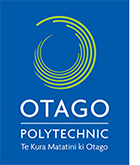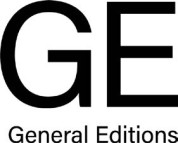Contributors
ABOUT US
Scope: Contemporary Research Topics is a series of peer-reviewed open access journals published annually online by Otago Polytechnic Press, with the print edition co-published with General Editions.


Each issue is archived by Legal Deposit with The National Library of New Zealand.
For further information please see the colophon for each separate issue.
Martin Andrew (Series Editor)
FORMATS
Formats include and are not limited to: articles; essays; original research; practice and project reviews,conference and travel reports; reviews, residencies and publications; and moving, interactive works (to be negotiated with the editors for the online version, with contextualising paragraphs and stills to appear in the text version). Other suggested formats will also be considered; and special topics comprising submissions by various contributors may be tendered to the editors. The maximum word length for feature articles is 4000 words, with other formats at a shorter length. Please ask editors for more guidance on word limits for your submission. All submissions must include disclosure of whether and how AI was used in writing the work.
SUBMISSIONS
Each journal will have a Call for Papers. Submissions should be sent by electronic format by the deadline for the Call for Papers, for review and potential inclusion in the annual issue to the editors of each issue. Please consult the information for contributors below and the hardcopy or online versions of the previous issues for examples at this website. All submissions are subject to double blind peer review. Peer review feedback will be sent to all submitters in due course, with details concerning the possible reworking of documents where relevant. In the event of major rewrite, submitters can resubmit for another round of peer approval subject to the timeline for print production. All final decisions concerning publication of submissions will reside with the editors based on the article's fit with the issue theme, the number of submissions received and the double blind peer review process. Opinions published are those of the authors and not necessarily subscribed to by the editors, or the institution. Scope: Contemporary Research Topics does not require abstracts.
INFORMATION FOR CONTRIBUTORS
Submissions should engage with contemporary practices in ways which may contribute to critical debate and new understandings. High standards of writing, proofreading and adherence to consistency through the APA referencing style are expected (Chicago endnotes referencing style for Art & Design). For more information, please refer to the APA Manual of Style; and consult previous issues for examples, for other Scope journals. Please take particular note of online referencing formats and follow the style guide accordingly.
Submissions must be in a plain word document (please don't use Word-styles to apply formatting). PDFs will not be accepted for the text component of the submission.
A short biography of no more than 50 words; as well as title; details concerning institutional position and affiliation (where relevant); and contact information (postal, email and telephone number) should be provided on a separate cover sheet, with all such information withheld from the body of the submission.
Scope does not charge any fees to authors for open access publication.
IMAGES
For final print publication purposes images should be sent as separate TIFF or high res JPEG, with resolution equivalent to at least 300 dpi, by email or electronic transfer. Indicate in the article the approximate placement of images with <<figure 1>> Maximum image print area is 130mm wide x 180mm deep. All image files should be labelled with the author’s name and numbered in the order in which the images appear in the document e.g. “smith_figure_1.tif”. “smith_figure_2.tif” etc. The author should supply a separate list of full captions in a word document. All images must be accompanied by reproduction permission.
Provision of high resolution images is a prerequisite for images to be considered for possible publication. Publication of images is at the editors' discretion depending on availability of space and budget considerations. Image quality is also taken into consideration when making these decisions. Copies of written copyright permissions should also be included with all images for work that is not the author's.
COPYRIGHT
Contributors retain copyright in their submissions and must obtain permission for the use of any material that is not their own included in their submission. Contributors grant the publishers permission to deposit the published work in our institutional repository.
Please read our Publishing Ethics page for more information and notes on determining Authorship.
Except for images, mātauranga Māori, and where otherwise indicated, content will be made available as open access on a Creative Commons Attribution license 4.0.
All images, figures and tables are copyright to the respective artists and photographers.
Mātauranga Māori is a significant component of New Zealand’s heritage, and sharing mātauranga Māori facilitates inter-cultural dialogue and understanding that is in the national interest. However, we recognise that the originating Māori community and/or individual has the primary interest as kaitiaki over the mātauranga and we are therefore committed to ensuring that the sharing, promotion and innovation based on mātauranga Māori respects and enhances its cultural and spiritual integrity, as well as that of the originating community and/or individual.
AUTHOR CHECKLIST FOR SUBMISSIONS
- The submission has not been previously published, nor is it before another journal for consideration.
- Supply all author details, including institution, current address and contact email on a separate file
- The text is single-spaced; uses a 12-point font; employs italics, rather than underlining (except with URL addresses) and the submission file is saved as a .doc or .docx file.
- Brief author bio including institutional affiliation
- Indicate the nominated, submitting, contact author by including their present address
- Indicate the type of article (e.g. Article, Case Study)
- Quoted material is used with written permission and clearly identified in the manuscript
- Use the APA style of referencing, with endnotes (Chicago endnotes for Art & Design) please check with editor for preferred referencing edition and style. Please see previous issues for examples.
- Numeric data are given in SI units
- Prepared tables, figures and their captions- all illustrations, figures, and tables placeholders are within the text at the appropriate points, rather than at the end. All figures will be in original format and not as screen grabs.
- Images are provided as TIFF, JPEG or EPS files and are at least 300dpi. Image files are labelled with the contributor's name and number in the order which they should appearas above and sent as individual attachments by email or electronic transfer.
- Written reproduction permission has been obtained for all images. A supporting page of information detailing authorship, full title, origin and permission for all images is supplied.

